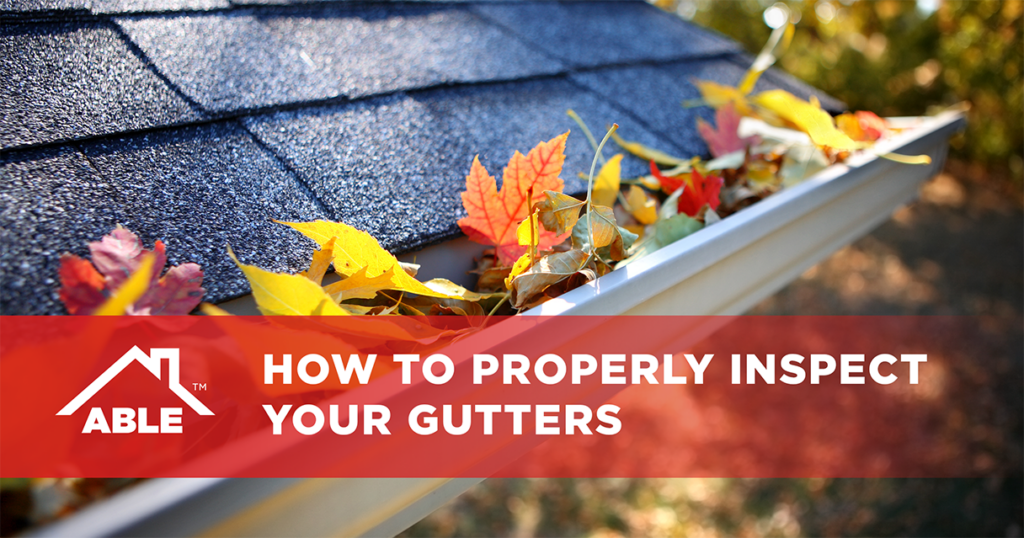Regularly inspecting your gutters is vital to protecting your home.
Keep in mind just how much your gutters are doing when keeping your house in good working order—most notably, they help protect you from water damage. Water damage of any kind can lead to a host of frustrating issues, many of which come with a hefty price tag to repair.
If they’re doing their job, gutters will effectively move direct runoff away from your home. However, if your gutters become damaged or clogged, this can lead to severe issues, such as structural damage.
But don’t fear—by inspecting your gutters twice a year, you can catch issues before any serious damage is done. To prevent water leakage, structural damage, and more, make sure to check your gutters regularly. This is precisely how you can get started.
How to inspect your gutters (in six steps).
Clear away significant debris
First, you’ll need to clear away any major debris lingering in your gutters. For instance, it’s common for gutters to get bogged down by fallen leaves, which need to be manually cleared away. To accomplish this safely, securely attach a bucket to your ladder, and place the debris there. Alternatively, you can lay out a tarp on the ground, where you can drop the leaves and other debris.
Hose down your gutters
Even after you’ve finished clearing out significant debris, there’s a good chance that smaller items of debris will be left over. Fortunately, these can be flushed out easily with a garden hose. During this process, make sure to watch the stream of water—is there an obvious leak, or is the water working its way through the downspout, as it should?
Address any leaks or clogs
If you noticed that the water wasn’t freely flowing, the downspout needs to be unclogged. If your downspout is connected to an underground pipe, remove it from that pipe. Then, try to loosen any lingering debris with a powerful spray of water. If the water doesn’t do that job, you may need to use a plumber’s snake.
Make sure there’s no standing water
Take another look at your gutters to confirm that there’s no slow-moving or standing water. If there is, this is a sign of an inadequate slope. You’ll most likely need to reposition hangers or spikes to create a more substantial slope directed at the downspout.
Make sure the hangers or spikes are secure
Over time, your gutters’ hangers or spikes can loosen, leaving space between them and the wall of your home. If this occurs, your hangers or spikes might need to be replaced or at least re-secured to the rafters. Likewise, if water runs down the side of your house when it rains, this is a sign that your hangers or spikes are loose.
Examine the seams and end caps
Wherever you’ve seen a leak, check to see if it’s located on a seam, end cap, or another spot where sealant seems to have worn away. These leaks might be repairable simply by stripping away the old sealant and applying a new layer. However, if you instead noticed holes in the aluminum or fiberglass of your gutters, you may need to perform more substantial repairs—this could even mean replacing an entire section.
Contact Able Roof
Have you recently discovered a clog or a leak in your gutter? Don’t wait until water damage occurs to seek repair services. Instead, get in touch with the roofing experts at Able Roof today. You can even receive a free estimate from our site.








